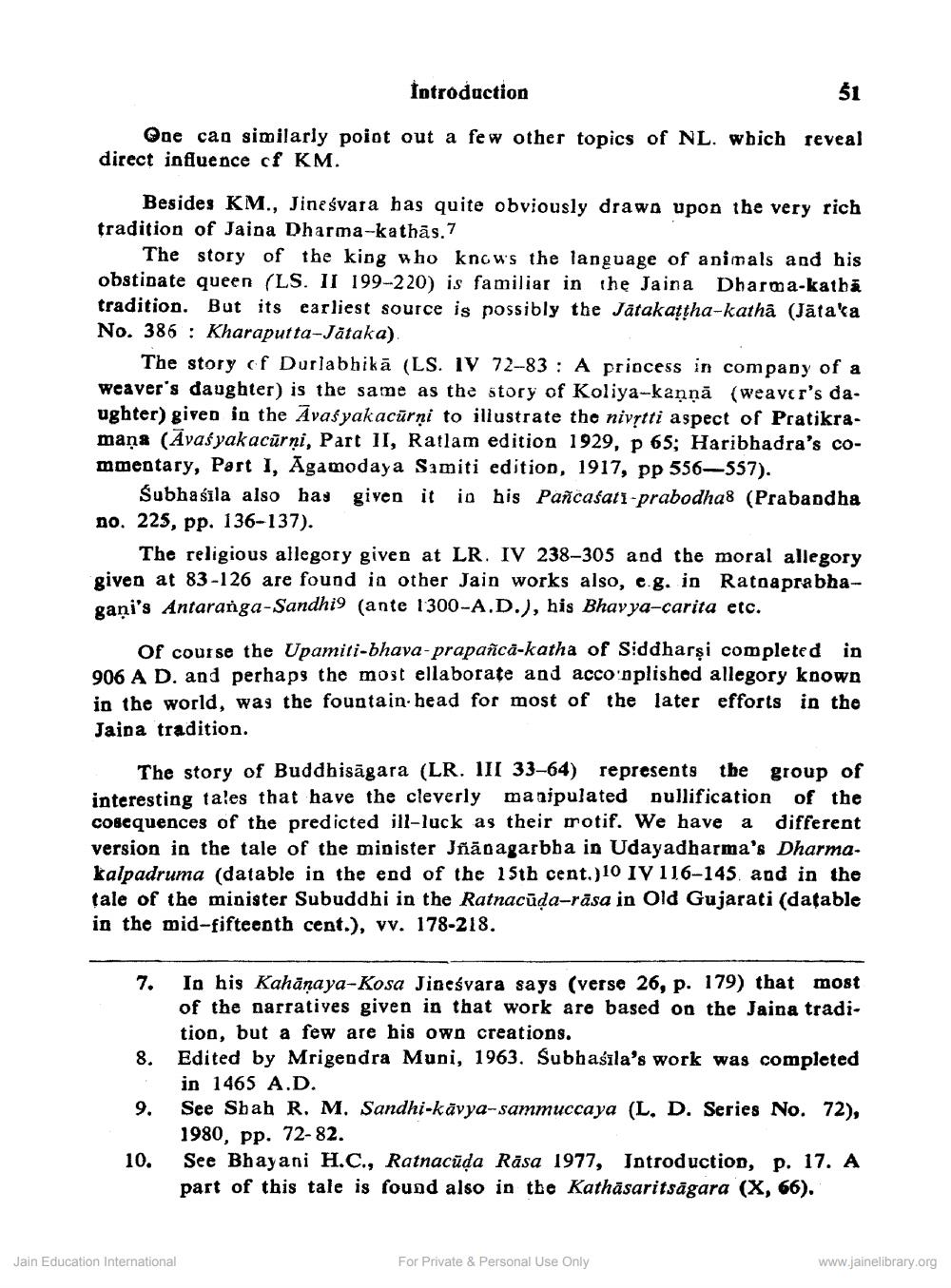________________
Introduction
51
One can similarly point out a few other topics of NL. which reveal direct influence of KM.
Besides KM., Jinesvara has quite obviously drawn upon the very rich tradition of Jaina Dharma-kathas,7
The story of the king who knows the language of animals and his obstinate queen (LS. II 199-220) is familiar in the Jaina Dharma-kathā tradition. But its earliest source is possibly the Jatakaṭha-kathā (Jātaka No. 386 Kharaputta-Jataka).
The story of Durlabhikä (LS. IV 72-83: A princess in company of a weaver's daughter) is the same as the story of Koliya-kanna (weaver's daughter) given in the Avatyakacarni to illustrate the nivytti aspect of Pratikramana (Avasyakacurni, Part II, Ratlam edition 1929, p 65; Haribhadra's commentary, Part 1, Agamodaya Samiti edition, 1917, pp 556-557).
Subhasila also has given it in his Pañcasar-prabodha8 (Prabandha no. 225, pp. 136-137).
The religious allegory given at LR. IV 238-305 and the moral allegory given at 83-126 are found in other Jain works also, e.g. in Ratnaprabhagani's Antaranga-Sandhi9 (ante 1300-A.D.), his Bhavya-carita etc.
Of course the Upamiti-bhava-prapanca-katha of Siddharsi completed in 906 A D. and perhaps the most ellaborate and accomplished allegory known in the world, was the fountain-head for most of the later efforts in the Jaina tradition.
The story of Buddhisagara (LR. III 33-64) represents the group of interesting tales that have the cleverly manipulated nullification of the cosequences of the predicted ill-luck as their motif. We have a different version in the tale of the minister Jñanagarbha in Udayadharma's Dharmakalpadruma (datable in the end of the 15th cent.)10 IV 116-145 and in the tale of the minister Subuddhi in the Ratnacuda-räsa in Old Gujarati (datable in the mid-fifteenth cent.), vv. 178-218.
7.
8.
9.
10.
Jain Education International
In his Kahanaya-Kosa Jinesvara says (verse 26, p. 179) that most of the narratives given in that work are based on the Jaina tradition, but a few are his own creations.
Edited by Mrigendra Muni, 1963. Subhasıla's work was completed in 1465 A.D.
See Shah R. M. Sandhi-kavya-sammuccaya (L. D. Series No. 72), 1980, pp. 72-82.
See Bhayani H.C., Ratnacuda Rasa 1977, Introduction, p. 17. A part of this tale is found also in the Kathasaritsägara (X, 66).
For Private & Personal Use Only
www.jainelibrary.org




